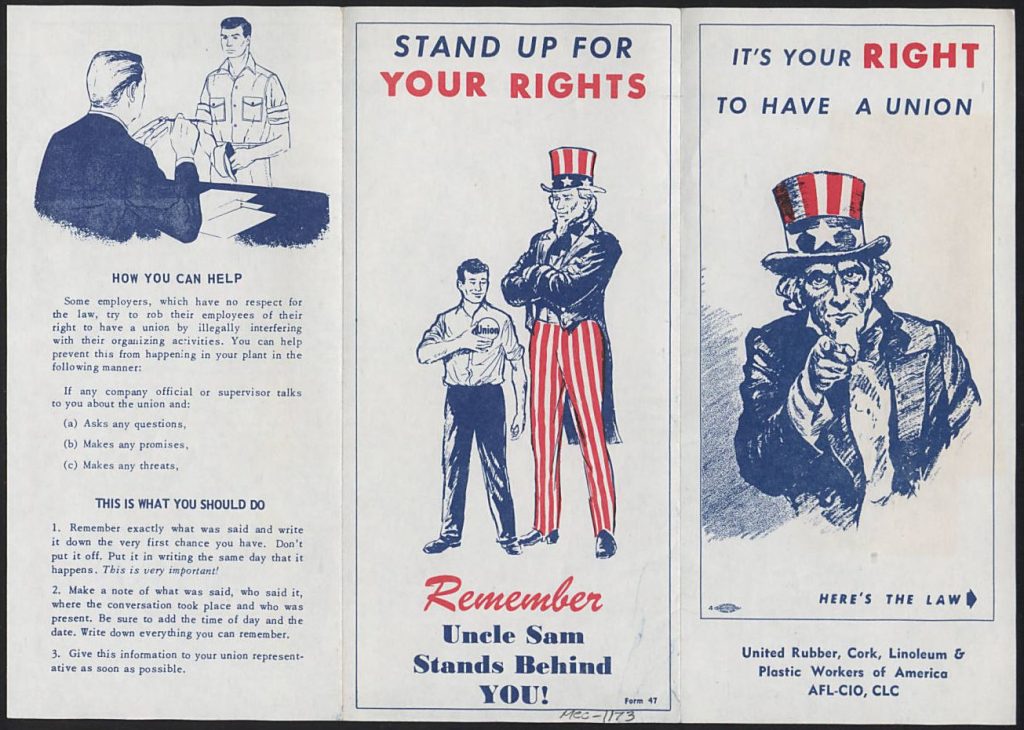We were excited this past semester to partner with the AMST 475H, Documenting Communities class here at UNC to show them how a digitization project works from star to finish. This is a guest post from the class.
Written by: Dani Callahan and Lucas Kelley
New material that documents the unionization of the Gastonia’s Firestone Mill have been added to DigitalNC’s existing collection on the mill: the Loray Digital Archive. The Gaston County Museum of Art and History provided the materials for digitization, and UNC-Chapel Hill students in Professor Robert Allen’s Documenting Communities course scanned the material, researched the unionization movement, and added metadata to the documents.
The unionization of the Firestone Mill occurred in the late 1980s and was particularly contentious both within the mill community and throughout the region. The violent unionization efforts of the 1920s, exemplified in the Loray strike of 1929, had left deep wounds within Gastonia, and area residents and workers had traditionally distrusted subsequent unionization attempts. The widespread economic downturn in the textile industry in the 1980s, however, meant harsher conditions and less pay for the workers at Firestone, and some workers hoped the United Rubber Workers Union could provide protection from the difficult economic climate.

Pro-union pamphlet distributed to employees at Firestone Mill in the late 1980s. It was produced by the AFL-CIO.
The materials added to the Loray Digital Archive document the pro-union and anti-union campaigns. Each side sought to attract workers to their cause with flyers, posters, stickers, buttons, and pamphlets. Initially, the anti-union forces held off the unionization attempt in 1987. Widespread media coverage turned the referendum into a political circus and leaders of the pro-union movement could not overcome area residents’ distrust. Yet a year later, Firestone workers voted to join the union in a campaign that was much more subdued. The success of pro-union forces was due in large part to the diligence of the union’s committee members working inside the mill. While the 1987 vote had turned into a regional and even national media circus, the 1988 vote remained an internal debate housed within Firestone itself. When the workers at the Firestone Mill voted on April 14th, 1988 to join the United Rubber, Cork, Linoleum and Plastic Workers by a narrow margin, it was a victory nearly sixty years in the making. Click the link view all the materials from the 1980s union effort.
